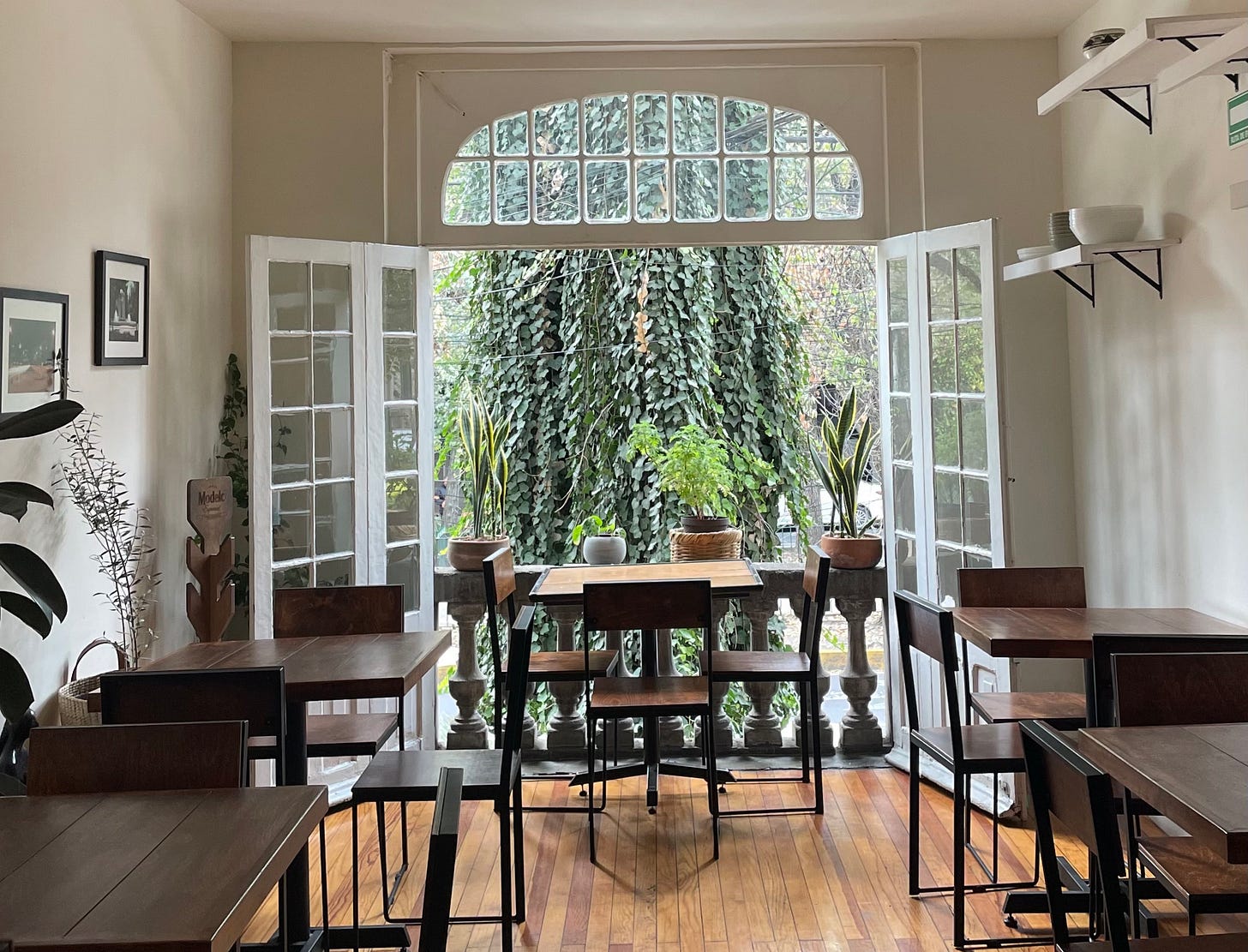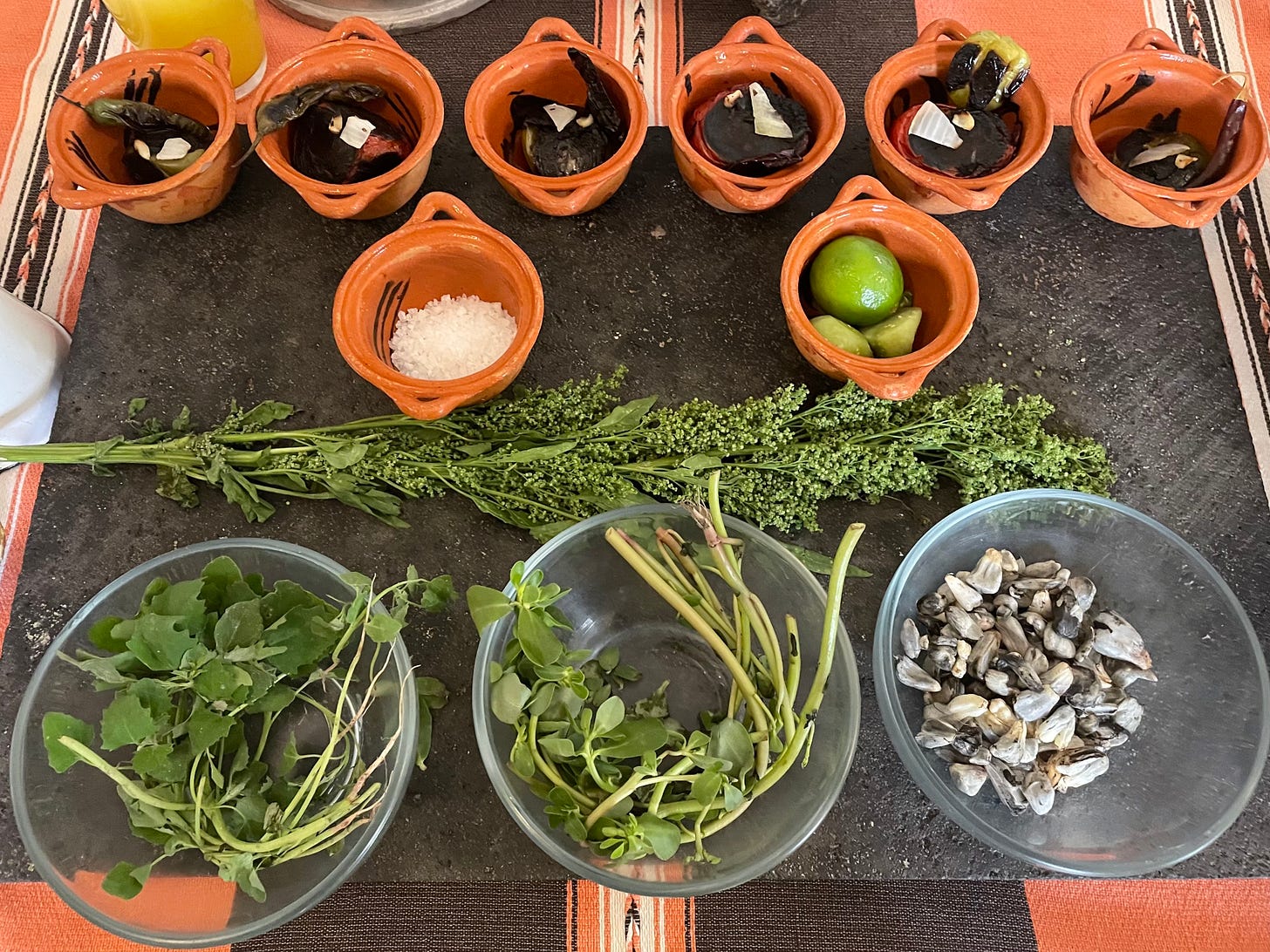It’s a sunny day in the Roma Norte neighborhood of Mexico City. My friends and I rush along the tree-lined streets, passing hip coffee shops and vintage stores on our way to the local restaurant La Prosperidad Lonchería (literally, “The Prosperity Diner”). We are attending a cooking class where we will learn how to prepare a traditional Mexican meal taught by the restaurant owner, Vanessa Garcia, and inspired by the mayoras of Mexico.
Historically, a mayora was the principal cook in a Spanish colonial household. In more recent times, mayoras have come to be associated with being the authority on ancestral culinary knowledge, including native ingredients, techniques, and practices. They have come to represent Mexican culinary authenticity, and to act as “guarantors of the intergenerational transmission of ‘traditional Mexican food’” (Prieto-Piastro and Colás).
While the role sounds noble, the reality is often more bleak. Many mayoras hail from the countryside, where they grew up in small farming villages. They usually lived with and worked alongside their family on their milpas, or small fields where different crops are grown. Everything they learned about food they learned by living close to where it grows, and inheriting ancient regional cooking traditions from the women who raised them.
Unfortunately, despite Mexico’s abundant and rich farmland, it is very difficult to make a living from agriculture, and so the mayoras move to Mexico City where there are more opportunities. Many are single mothers who had to leave their children behind. Some of them end up working in restaurants, taking on all sorts of roles from washing dishes to pressing tortillas by hand to making complex salsas. Some even become employed at fine dining restaurants, but never as chefs – they are usually brought in to cook pre-service meals for the staff.
Vanessa initially encountered mayoras during her first foray into the culinary world: her family’s restaurant. Born and raised in Mexico City, she was fascinated by the origins of the mayoras that she worked with, as well as their deep knowledge about traditional cooking techniques and procedures. Their preference for ingredients depended on what was available in their hometowns, but they were always native to the land.
The idea of centering her restaurant around the mayoras came to Vanessa when she learned of their ancillary roles within high end restaurants. In an aha moment, she asked, “What if my restaurant shone a spotlight on the mayoras and put their work front and center?” She started employing them to help develop the menu at her restaurant, and eventually decided to focus entirely on the concept of mayoras who make traditional recipes employing age-old procedures and using native ingredients, all learned from their heritage.
In Mexico the kitchen is often the beating heart of the home, and family meals are considered a sacred time. At the center of it all are usually the mothers and grandmothers, the aunts and sisters, who are highly respected within the family, despite a patriarchal society outside of the home. For many Mexicans, eating family meals prepared by their abuela is one of their first notable encounters with food.
Eating at La Prosperidad Lonchería (literally “the prosperity diner”) is meant to remind you of eating at your grandmother’s house. The ingredients are natural and fresh, the preparation is hearty and comforting. Using the recipes provided by the mayoras, the restaurant serves home cooked flavors that are familiar and evocative of simpler times at abuela’s dining table.

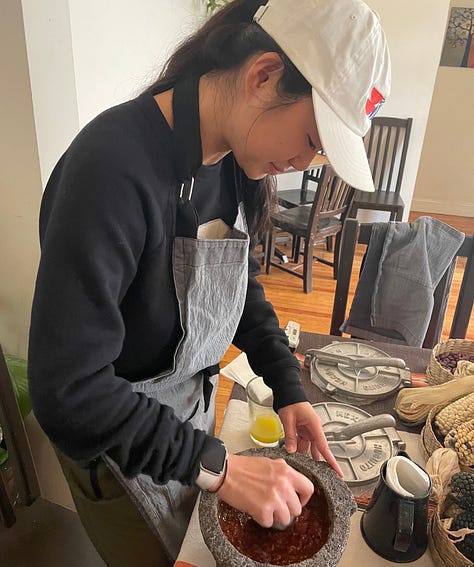
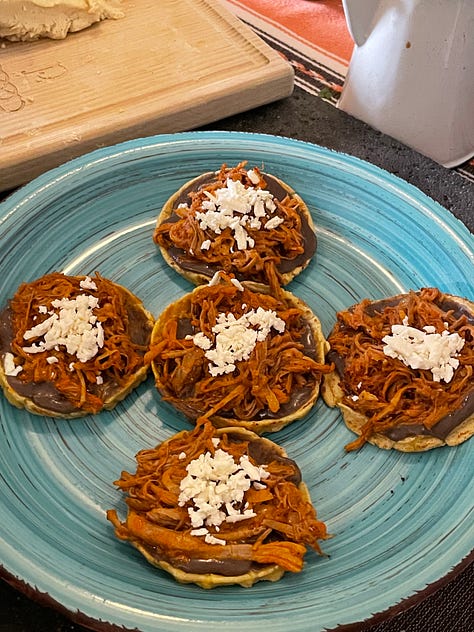
The concept further developed when Vanessa started teaching the “Cooking with Mayoras” class that we are attending. In it, she covers the most essential indigenous Mexican ingredients, including all kinds of corn, chiles, herbs, and quelites (wild vegetables). Then there is an interactive portion where we learn how to craft the perfect guacamole, press tortillas by hand, and prepare an assortment of salsas using the molcajete (mortar and pestle made from volcanic rock).
Along the way, we meet the mayoras, learn about their origins and hear their stories. Our mayora, Lupita, helps us as we combine the various elements on a large comal (griddle) to create traditional dishes such as sopes, chalupas, and quesadillas. To toast the end of a fun and informative class, shots of mezcal are passed around with slices of orange covered in tajín. ¡Salud!
These days, Mexican food is getting a ton of attention, largely due to a small group of fine dining chefs who are redefining the cuisine. They are combining native ingredients with imported flavors and employing techniques they studied abroad to create a more elevated/fusion offering. Vanessa describes it as “syncretism”, or different cuisines merging together to create a new one.
Vanessa has noticed that this syncretism is causing a decrease in demand for traditional recipes, and they are becoming harder to find as a result. She shares that, “These recipes are very important, because they are the recipes that the people of my generation grew up with. They are part of what we used to eat everyday.” Luckily, she has a platform to reach both tourists and locals alike.
When Vanessa started teaching the classes over four years ago, only tourists signed up. Now more Mexicans are interested as well, especially those who grew up in America and want to learn more about their roots. Last year, she also started hosting classes for companies comprised of Mexican natives, which represented a whole new vector for sharing appreciation and preserving history. Through her cooking class, she hopes to remind Mexicans that these native ingredients and traditional preparations constitute an important part of their heritage.
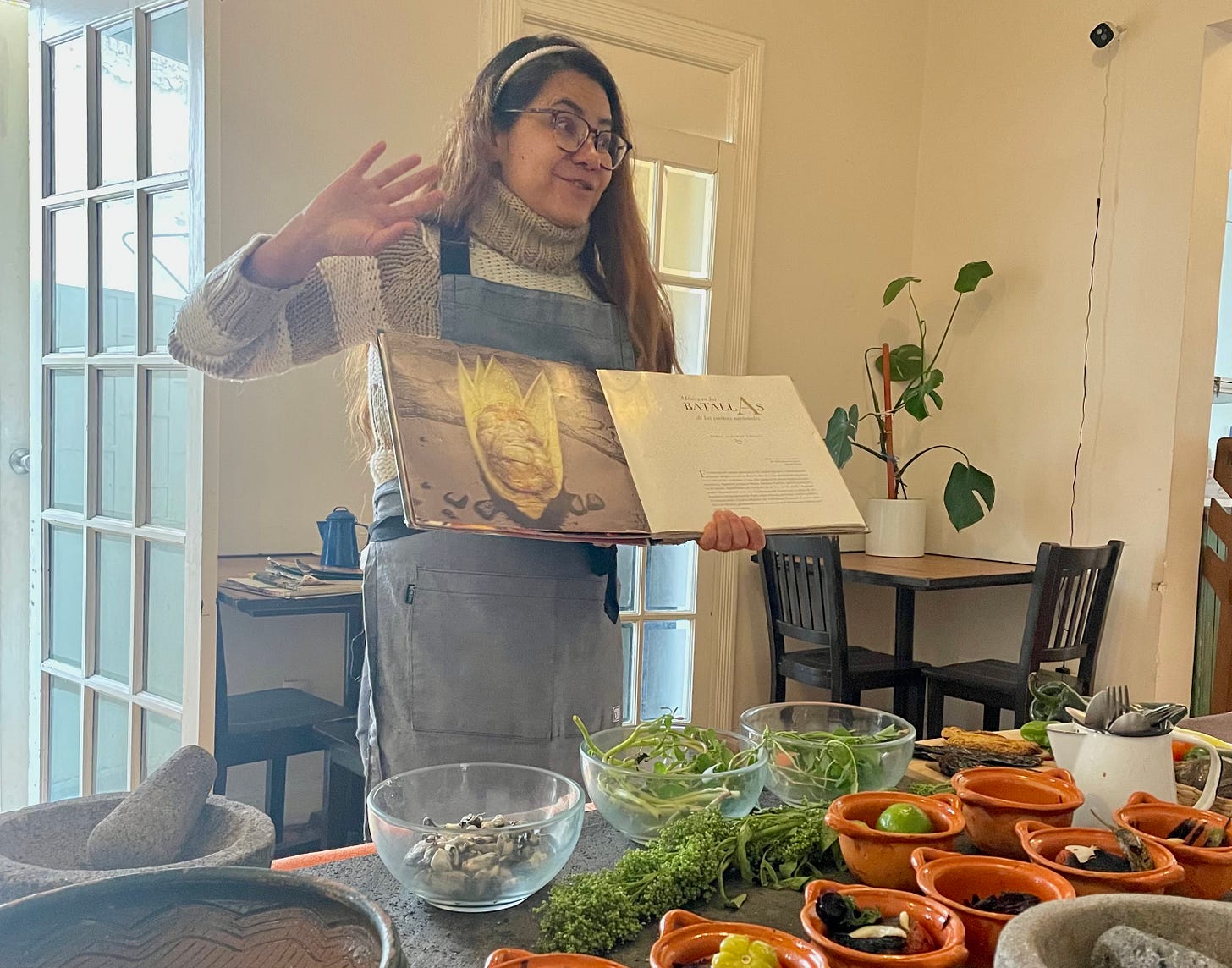
When Vanessa first graduated from university with a degree in marketing and communication, she wanted to pursue journalism. She aspired to combine her passion for art and culture with her interest in education and social issues. However, it’s not always easy to speak up about these issues in Mexico, especially when it involves taking a critical stance against the government. Instead, as she immersed herself in the culinary world, she found an even more compelling opportunity to fulfill her aspirations.
Now she uses her restaurant and cooking classes as platforms to educate guests about social issues like the poor treatment of farmers in the country. She emphasizes that a lot of mayoras started cooking at her restaurant out of necessity, because they couldn’t make a sustainable living on their farms. They didn’t initially see the value in their traditional techniques and recipes and were surprised that people would be interested in learning from them. These women were used to being overlooked for the work that they did, and often don’t realize how valuable their skills really are.
For Vanessa, this is the most rewarding part of her job. Through the restaurant, she is helping mayoras to find the stability they seek, enabling them to provide for their families and even to send their kids to college. Through the cooking classes, she is further providing a platform for them to share their stories through food. Thanks to these endeavors, the mayoras have garnered newfound appreciation from people from all over the world, and for Vanessa it's been wonderful to witness the moment when their surprise at peoples’ interest turns into pride in their work and in themselves.
Thank you so much to Vanessa for a wonderful cooking class, and for taking the time to chat with me afterwards. If you ever find yourself in Mexico City, I highly encourage you to book a Cooking with Mayoras class with her!




